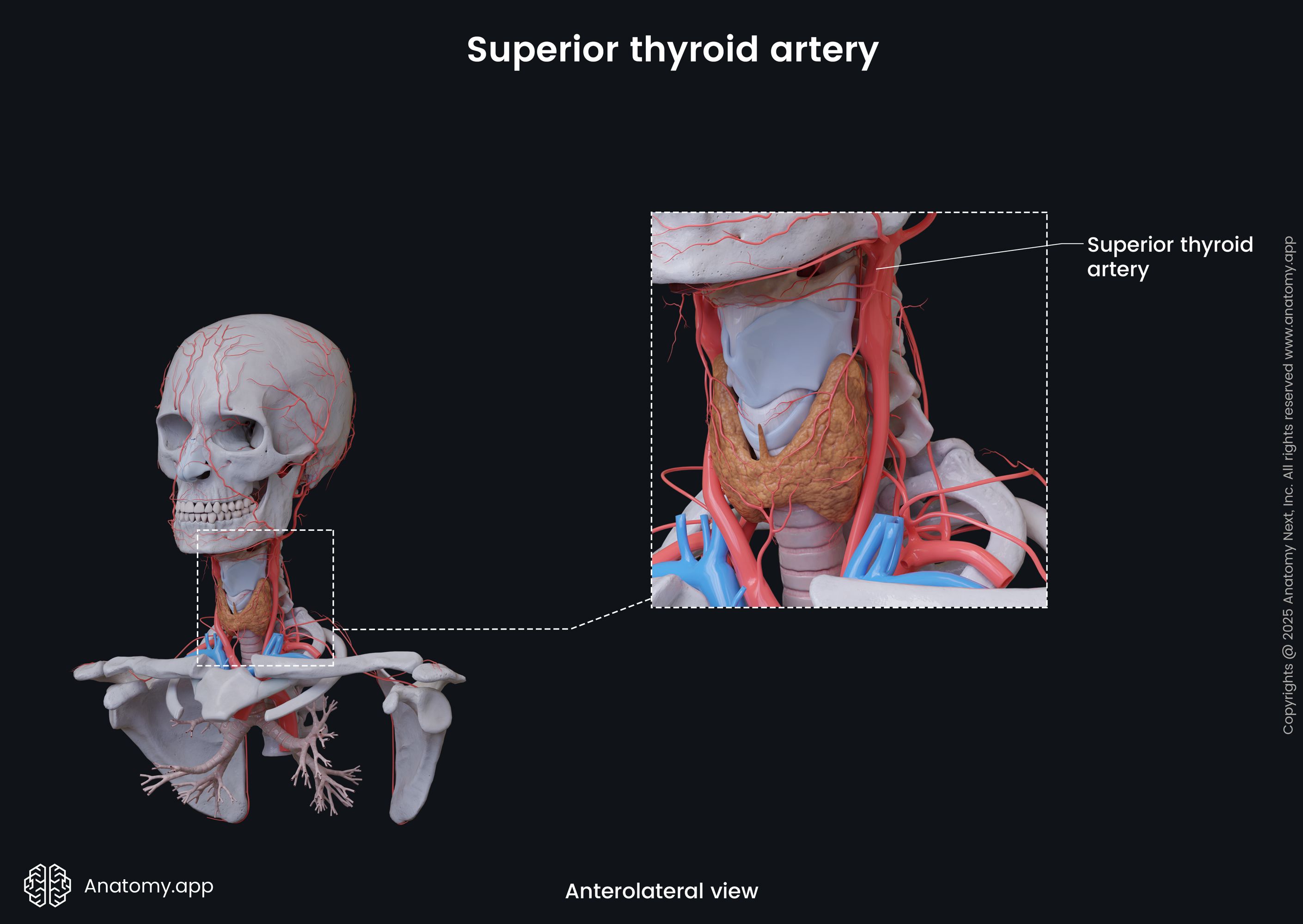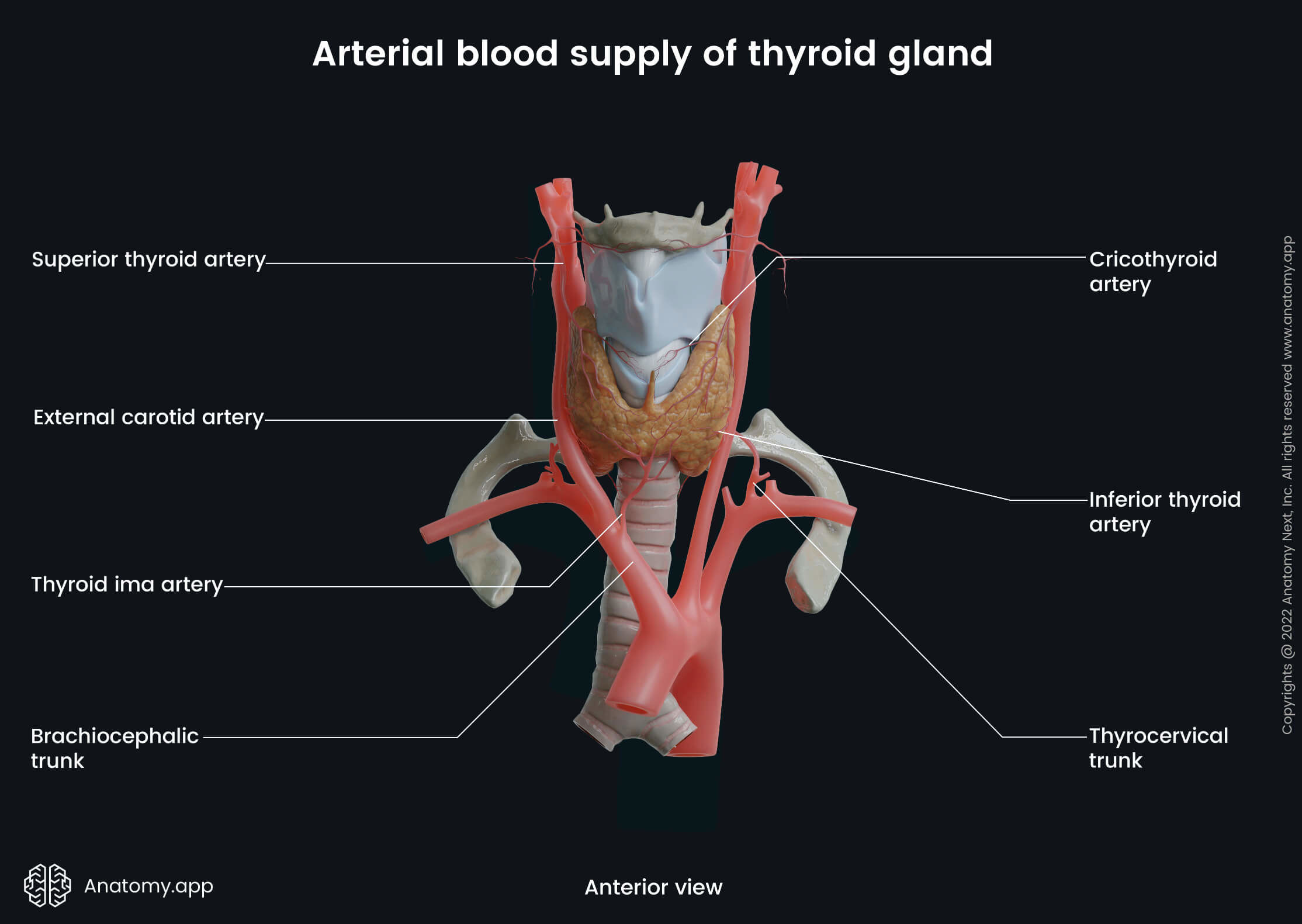- Anatomical terminology
- Skeletal system
- Joints
- Muscles
- Heart
- Blood vessels
- Blood vessels of systemic circulation
- Aorta
- Blood vessels of head and neck
- Arteries of head and neck
- Veins of head and neck
- Blood vessels of upper limb
- Blood vessels of thorax
- Blood vessels of abdomen
- Blood vessels of pelvis and lower limb
- Blood vessels of systemic circulation
- Lymphatic system
- Nervous system
- Respiratory system
- Digestive system
- Urinary system
- Female reproductive system
- Male reproductive system
- Endocrine glands
- Eye
- Ear
Superior thyroid artery
The superior thyroid artery (Latin: arteria thyreoidea superior) is a branch of the external carotid artery arising from its anterior surface. The superior thyroid artery supplies the thyroid gland, infrahyoid neck muscles, tissues of the upper larynx, as well as the sternocleidomastoid and cricothyroid muscles.


Course of superior thyroid artery
The superior thyroid artery is the first branch of the external carotid artery, arising just below the level of the greater horn of the hyoid bone. Afterwards, the artery descends along the lateral border of the thyroid gland, where it divides into many branches to supply the gland.
Branches of superior thyroid artery
The superior thyroid artery in its course gives off the following branches:

The infrahyoid artery is a branch of the superior thyroid artery that passes along the lower border of the hyoid bone below the thyrohyoid muscle. It anastomoses with the same artery of the contralateral (opposite) side to supply the infrahyoid muscles of the neck.
The superior laryngeal artery goes along with the internal laryngeal nerve piercing the thyrohyoid membrane to supply blood to the upper part of the larynx. This artery anastomoses with its fellow artery of the opposite side and with the inferior laryngeal artery of the inferior thyroid artery.
The sternocleidomastoid artery runs downward and laterally across the carotid sheath to supply the middle region of the sternocleidomastoid. And the cricothyroid artery crosses the anterior cricothyroid ligament to supply the cricothyroid muscle.
Clinical note: The thyroid gland has a rich blood supply; therefore, during surgical removal of all or part of the gland (thyroidectomy), the superior thyroid artery requires ligation; otherwise, it will bleed profusely.